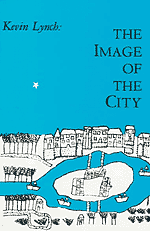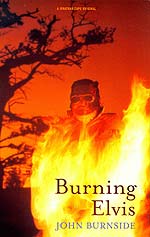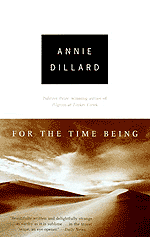Committed To Finding Out: Recent Reading | |

| When I was a kid I could never work out why my Dad had so many half-read books around; nor why he was interested in so many different things. You name it, the overdue books on loan from the library, piled in the corner of the lounge would sooner or later include it: tomes on canals, local history, aeroplanes, trains, London, education, forgotten rivers, and other subjects not inclined to interest many ten year olds. Now, of course, I understand perfectly. The world doesn't get any less interesting as you get older, in fact it does the opposite, and - just as there is more and more music I'd like to hear - there are more and more things that intrigue me, more and more books I want to read. I still like novels, I spend a lot of time writing, reading and around poetry [I run a small publishing company, and write as part of what I do for a living], but non-fiction comes to the top of the pile [or should I say the front of the 'to-read' shelf] more and more often. Just as inquisitive listeners end up spiralling into a web of associated bands, singers, live tapes, new albums and re-releases, non-fiction especially seems to always produce more and more titles I want to read. I bought Kevin Lynch's The Image of the City [MIT Press] because it is footnoted and cited in Matthew Goulish's 39 Microlectures, a book ostensibly to do with performance theatre [more on this later]. The Image of the City is a pivotal text from 1960 that changed the way [some] architects look at the city. Using Boston, Downtown LA and Jersey City as his three examples, Lynch explores how people map out the urban world they live in: a mix of landmarks, paths, districts, edges [between areas or districts] and nodes. It's fascinating reading seeing how his population sample agree on so much, yet also have very personal and different takes on the place. Having just been to Boston I found it interesting that 'the Boston most people know' corresponded completely with the places and areas we'd visited and could remember/describe. Lynch goes on to evaluate how people do actually navigate urban sprawls, and what makes these places comfortable to live and work in. He's pretty optimistic, and in some ways slightly naive. He also doesn't address why Europeans in European cities don't seem to have the trouble Americans do navigating organically-evolved cities as opposed to planned grids. That aside, it's a great, readable book, and sheds a lot of light on exactly how we do make a place usable and hospitable, perhaps even 'home'. |
 | I grew up in West London, and miss the place dreadfully. Nicholas Royle's new novel The Director's Cut [Abacus, £9.99] is set in the scruffy suburbs of Shepherd's Bush, Wood Lane, White City, Portobello Road; under and on the Westway flyover; and in Tottenham Court Road and the film world of Soho. It pretends to be a thriller, making its real start when a body wrapped in old film is found under a cinema that's being demolished. Four old friends gradually reveal to the reader what's going on - not just how the mysterious body got there, but who the killer on the Underground is, and what each of the four of them really is doing with their lives. It's all highly entertaining, moves briskly along and is clearly well researched and documented. Which, in fact, is the problem. It's far too obviously over-researched. Royle clearly fancies himself as a bit of a J.G. Ballard or Iain Sinclair, so we get arcane knowledge, local history and useless detail dropped in, which merely distracts from what is a straightforward, old-fashioned story. I'm a fan of Ballard and Sinclair, but they write with an ease and fluency that Royle simply doesn't have - on this showing at least. And the portentous and heavily symbolic ending - which I won't tell you, in case you want to read the book - really is heavy-handed and unwarranted. John Burnside normally lurks at the edges of cities and towns, where the suburbs meets the country, where canals and roads become unpopulated, where itinerants can move around unrecognised and unharassed, where anything can, and often does happen, usually with nasty results for all concerned. Burnside is a phenomenal poet, exploring notions of epiphany, contrasted with outsiders and the occurrence of murder, rape and other violence. He has gone on to write two of the nastiest novels I have ever read, where he not only seems to really get inside evil, but is fascinated and seduced by what he describes. Burning Elvis [£10.00, Cape] however, is a collection of short stories that take a welcome step back from the darkness of his novels into more of a twilight zone. I can't actually beat what the blurb says: 'Éa book about innocence and fear, about boys and men who have no idea who they are, or what they are supposed to do, but are haunted by a vague apprehension of possible grace.' Burnside's characters are weird, are out somewhere else from where I live, or want to live, but they are understandable and often sympathetic. Things happen to them; the world swallows them up in strange outbursts of physical or emotional violence; or memory and elsewhere simply move in with them, gradually leading to some kind of breakdown, a point of no return. This is still a dark book - the 'possible grace' is only at the edge of the characters' or reader's vision - but it is beautifully written, a kind of pied piper elegy that draws you in to 200 pages of despair. |

| Annie Dillard is just as fascinated by the strange things that happen in our world, but she clearly stays in the light more. In For the Time Being [$12.00, Vintage] she constructs a collage of facts, reports, opinions and ideas to grapple with the very notion of why we exist and how one person can matter in the state of things. The Chinese clay warriors are juxtaposed with Jewish theology, the clouds overhead with the notion of time passing, death with painted clouds from history, earthquakes, cancer and shifting sands with Teilhard de Chardin's biological and philosophical journeying. Slowly the fragments build up into some kind of whole, we start to see what the jigsaw is of, though it would be difficult to articulate in straight forward prose or speech. Despite the melancholy that seems at the heart of the book, there is also optimism here too - the book ends with a Papa New Guinea villager strapping himself to a plane, the first they had ever seen, determined to satisfy his curiosity: 'He explained calmly to his loved ones, no matter what happened to him, he had to see where it came from.' Matthew Goulish is also committed to finding out. His 39 Microlectures in Proximity of Performance [Routledge] is a marvellous wander through Goulish's own life, his reading habits, inquisitive mind, and the world of Goat Island Theatre with whom he currently works. He kind of covers himself, because he clearly asks us to dip into the book, not read it through [as I did on the train home from the book launch in Bristol], but the book doesn't add up or accumulate in the satisfying way that Dillard's does. But the tangents, ideas and thoughts it throws up more than compensate. Here is someone constantly asking himself who, what, why and how; someone following leads; someone thinking hard - which is rare enough anywhere today. The 39 microlectures are really the first half of the book, each a zen-tinged anecdote, essay or story; each either pointed, or occasionally apparently pointless; all amusing and easy to read; all with a vast amount of names, book titles and music I want to rush out and read or hear, if I haven't already. [And of course, there's nothing nicer than finding out someone else likes, or is concerned with, the things you also like: in this case, Morton Feldman, John Cage, Gilles Deleuze and many others; and now Kevin Lynch and The Image of the City.] The second half of the book is a delightful set of 'source notes', where Goulish ignores academic precedent [though the quotes etc. are referenced] and offers what he calls 'a parallel commentary'. Parallel to us? to the text? to himself [i.e. a different version of the text]? Well, all of those; mostly, for me, the last. It's like reading another version of the same book, seeing another pack of shuffled cards - they're all there but not in the same place. Routledge cover themselves by listing the book's subject as 'Drama, Cult Reading, Cultural Studies'. Personally I'd have just put 'Life' on the back and be done with it. It's a great, quirky, innovative, read. © Rupert Loydell 2000 |